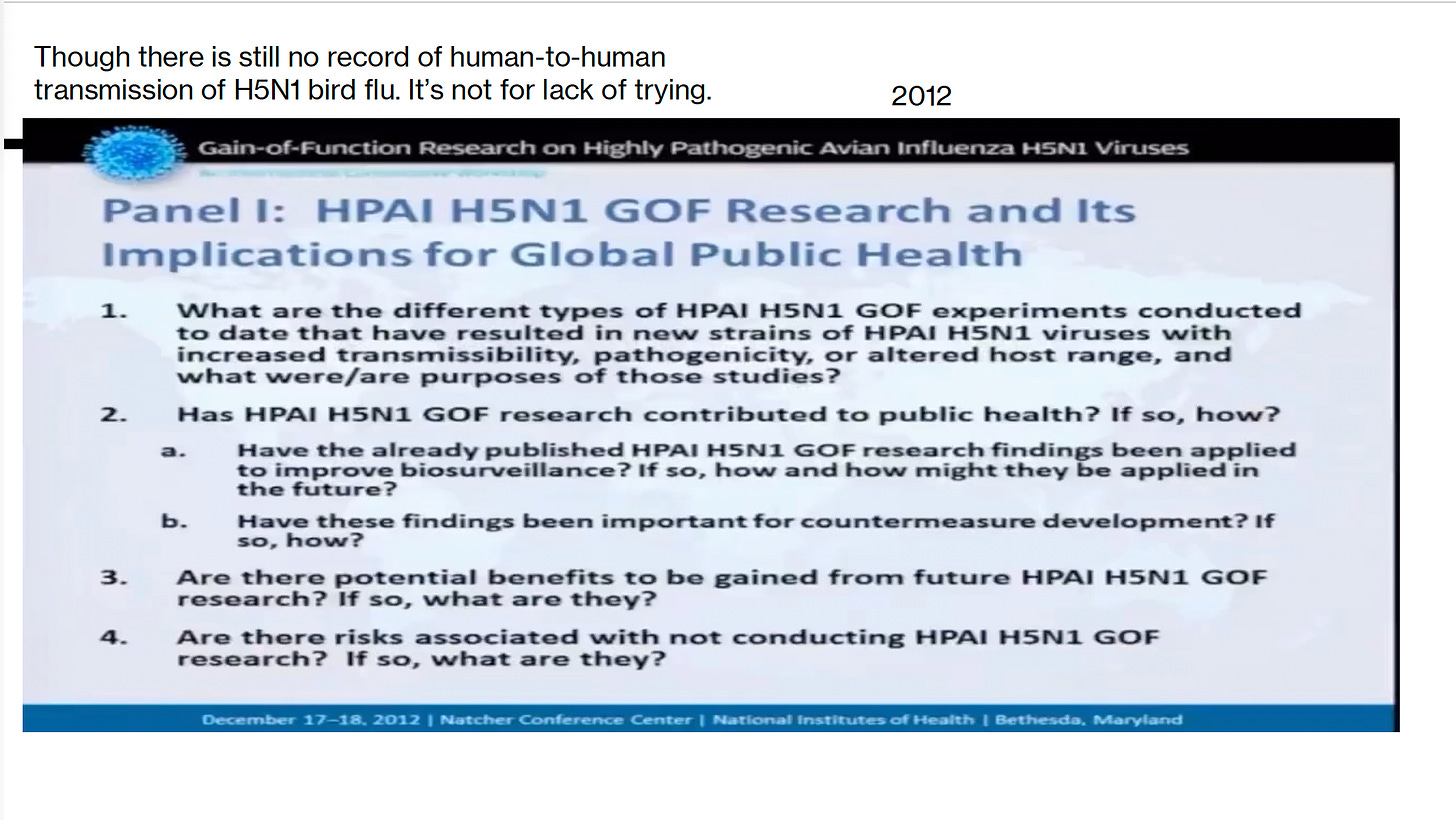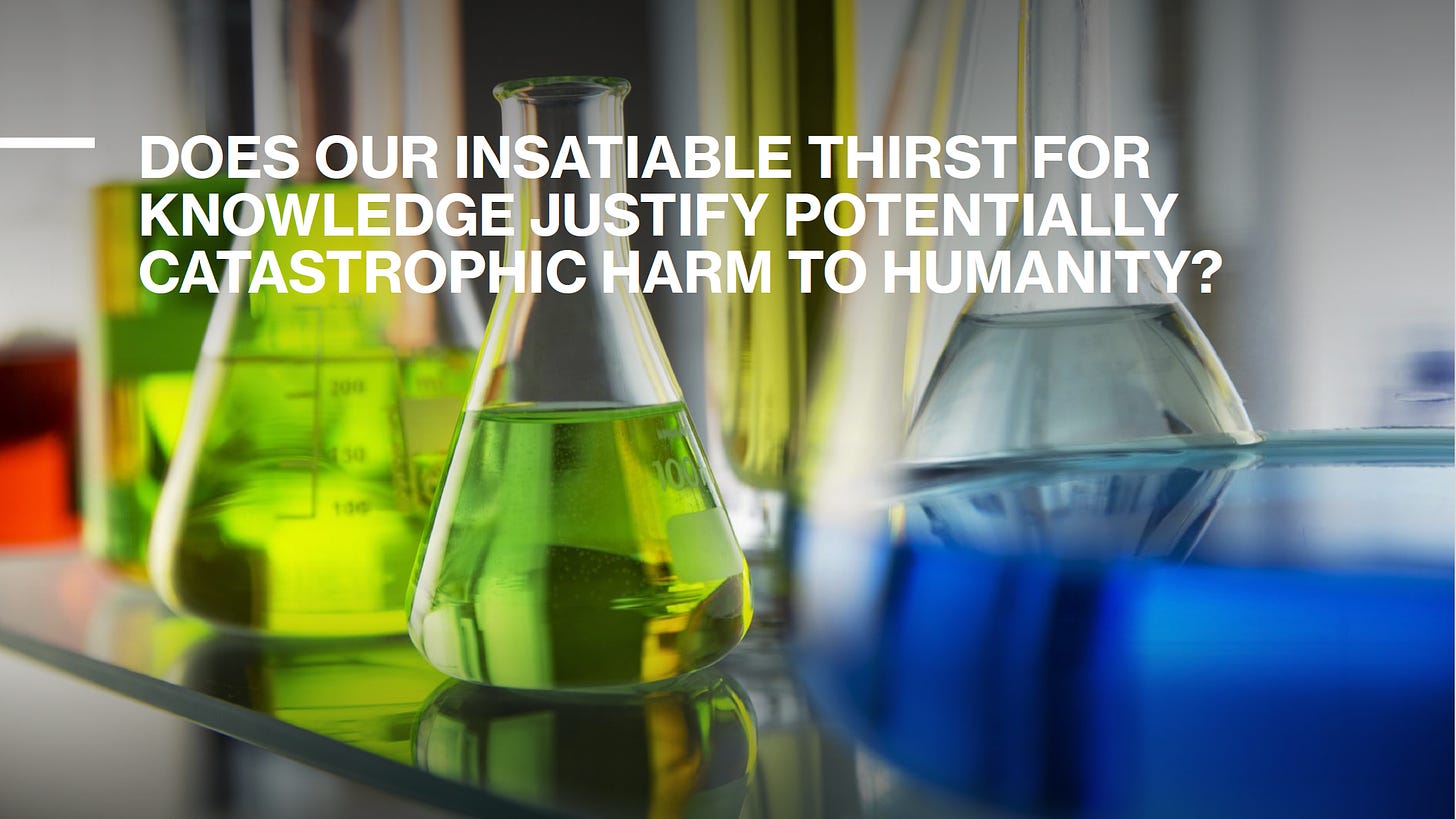“Gain of Function” and Influenza A Virus
The two have been intertwined for decades.

All Global Research articles can be read in 51 languages by activating the Translate Website button below the author’s name (only available in desktop version).
To receive Global Research’s Daily Newsletter (selected articles), click here.
Click the share button above to email/forward this article to your friends and colleagues. Follow us on Instagram and Twitter and subscribe to our Telegram Channel. Feel free to repost and share widely Global Research articles.
Global Research Wants to Hear From You!
***
“Those that fail to learn from history are doomed to repeat it.” – Winston Churchill
What Is Gain of Function Research (GOF)?
There is no clear consensus regarding what constitutes GOF research. In the current political climate where the role of US Government (NIH/NIAID, DoD/DTRA, USAID and by implication CIA) in funding of what is clearly GOF research seeking to increase human infectivity of bat Coronaviruses has created an opportunity for stakeholders to sow confusion and ambiguity concerning what actually constitutes GOF research. Much of the resulting obfuscation has involved technical parsing of the definition of GOF in ways which conveniently support the interests of key stakeholders such as Dr. Peter Daszak and his EcoHealth Alliance organization, as well as Dr. Anthony Fauci and his famous denial and attack on the credibility of Senator Rand Paul during congressional testimony.
On October 17, 2014, the Obama White House issued a statement titled “U.S. Government Gain-of-Function Deliberative Process and Research Funding Pause on Selected Gain-of-Function Research Involving Influenza, MERS, and SARS Viruses” which included a brief statement incorporating a useful general definition.
Gain-of-function studies, or research that improves the ability of a pathogen to cause disease, help define the fundamental nature of human-pathogen interactions, thereby enabling assessment of the pandemic potential of emerging infectious agents, informing public health and preparedness efforts, and furthering medical countermeasure development. Gain-of-function studies may entail biosafety and biosecurity risks; therefore, the risks and benefits of gain-of-function research must be evaluated, both in the context of recent U.S. biosafety incidents and to keep pace with new technological developments, in order to determine which types of studies should go forward and under what conditions.
Dr. Yoshihiro Kawaoka, from the University of Wisconsin-Madison is a leading influenza GOF researcher who identified and published research demonstrating that four point mutations in the H5N1 hemagglutinin protein (analogous to SARS-CoV-2 Spike protein) which will convert productive and transmissible H5N1 from being restricted to birds to being able to infect and efficiently transmit between mammals (and potentially humans). In the 2015 workshop summary cited above, further details and discussions relating to the nature of GOF research are summarized in “Section 3: Gain-of-Function Research: Background and Alternatives”. In this section, Dr. Kawaoka described and classified types of GoF research depending on the outcome of the experiments.
The first category, which he called “gain of function research of concern,” includes the generation of viruses with properties that do not exist in nature. The now famous example he gave is the production of H5N1 influenza A viruses that are airborne-transmissible among ferrets, compared to the non-airborne transmissible wild type. The second category deals with the generation of viruses that may be more pathogenic and/or transmissible than the wild type viruses but are still comparable to or less problematic than those existing in nature. Kawaoka argued that the majority of strains studied have low pathogenicity, but mutations found in natural isolates will improve their replication in mammalian cells. Finally, the third category, which is somewhere in between the two first categories, includes the generation of highly pathogenic and/or transmissible viruses in animal models that nevertheless do not appear to be a major public health concern. An example cited the high-growth A/PR/8/34 influenza strain found to have increased pathogenicity in mice but not in humans.
Routine virological methods involve experiments that aim to produce a gain of a desired function, such as higher yields for vaccine strains, but often also lead to loss of function, such as loss of the ability for a virus to replicate well, as a consequence. In other words, any selection process involving an alteration of genotypes and their resulting phenotypes is considered a type of Gain-of-Function (GoF) research, even if U.S. HHS policies and definitions are intended to apply to only a small subset of such work.
One leading virologist, Dr. Subbarao emphasizes that such experiments in virology are fundamental to understanding the biology, ecology, and pathogenesis of viruses. He introduced the key questions that virologists ask at all stages of research on the emergence or re-emergence of a virus and specifically adapted these general questions to three viruses of interest (see below). To answer these questions, virologists use gain- and loss-of-function experiments to understand the genetic makeup of viruses and the specifics of virus-host interaction. For instance, as we all know based on the work performed at the Wuhan Institute of Virology, researchers now have advanced molecular technologies, such as reverse genetics, which allow them to produce de novo recombinant viruses from cloned cDNA, and deep sequencing that are critical for studying how viruses escape the host immune system and antiviral controls. Researchers also use targeted host or viral genome modification using small interfering RNA or the bacterial CRISPR-associated protein-9 nuclease as an editing tool.
General Virology Questions and Questions Specific to Influenza, SARS, and MERS Research
- Why/how does the virus infect and kill mammals?
- What are the critical host range and virulence determinants of MERS-CoV?
- Why are some influenza strains more virulent than others?
- Do antiviral drugs work, and how does the virus become resistant?
- Can we identify antiviral drugs that are safe and effective for MERS-/SARS-CoV?
- What drives the evolution of influenza antigenic change and antiviral resistance?
- Do current or novel vaccines or monoclonal antibodies provide protection, and can the virus escape?
- Can we develop a SARS-/MERS-CoV candidate vaccine that is safe, immunogenic, and efficacious?
- Can monoclonal antibodies be used safely for prevention and treatment?
- Are there some influenza viral targets that will not allow escape from the immune system?
- How does the virus spread within animals or between animals?
- Why do some influenza strains spread efficiently while others do not?
- Could the virus cause a pandemic?
- What is the likelihood of (re)emergence?
- Will SARS or a SARS-like CoV re-emerge from bats or other animal hosts?
A Brief History of Gain of Function Research on Influenza A Viruses
During a recent seminar and presentation at the 5/4/24 Rancho Mirage Summit, Dr. Lynn Fynn, MD (a pseudonym) presented a slide deck which briefly summarized the history of GOF research on Influenza A viruses, beginning with the H1N1 influenza virus associated with the infamous 1918 “Spanish Flu” pandemic (which was as much about bacterial pneumonia as it was about H1N1), and carrying through to the present situation with H5N1. She has kindly provided a copy of the deck and permission to republish on this substack.







This is a video clip from the above meeting, in which Dr. Robin Robinson (then serving as the Director, HHS/ASPR/BARDA) was asked about benefits obtained from H5N1 GOF research. Notable is that his answer focused on vaccine development. The subsequently developed and currently FDA authorized H5N1 vaccine does not incorporate any sequence information derived from GOF research. I am aware of no evidence that this or any other FDA authorized vaccine, antibody or drug development benefitted from H5N1 GOF research.








*
Note to readers: Please click the share button above. Follow us on Instagram and Twitter and subscribe to our Telegram Channel. Feel free to repost and share widely Global Research articles.
All images in this article are from the author


